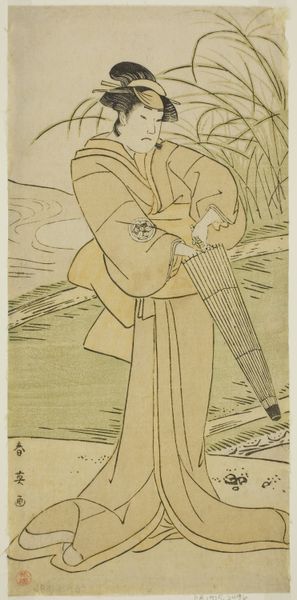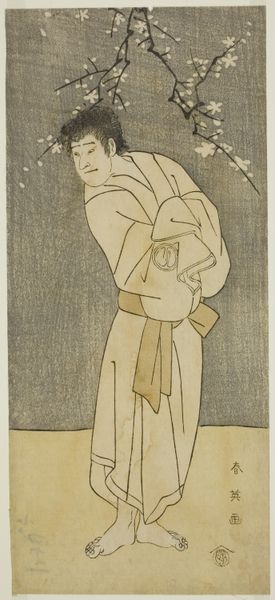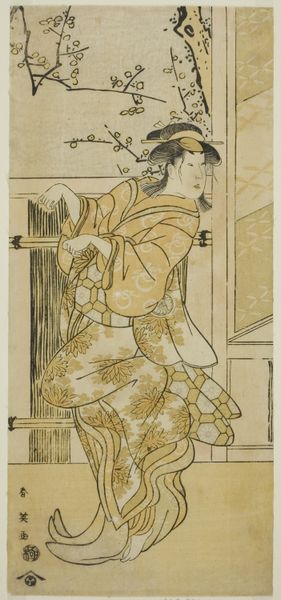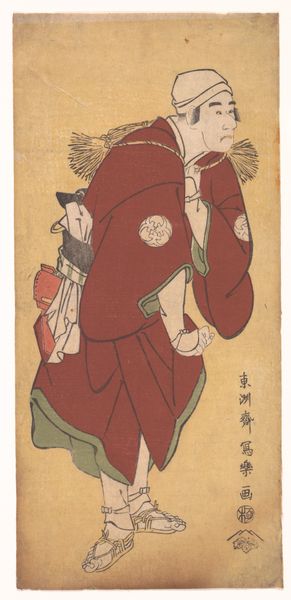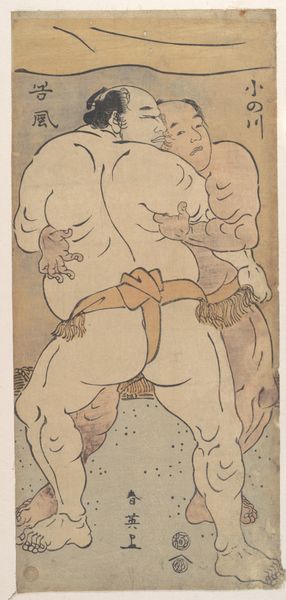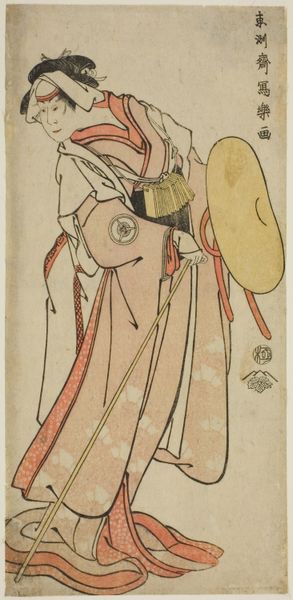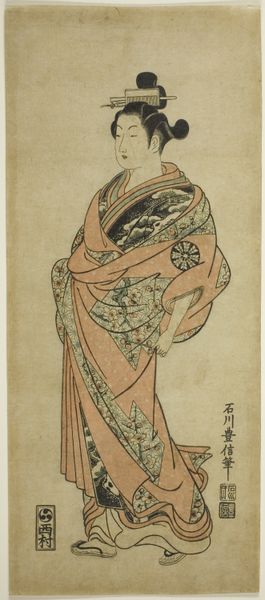
The Actor Onoe Matsusuke I as the Ghost of Ki no Natora in the Play Kiku no En Mukashi no Miyako, Performed at the Nakamura Theater in the Eighth Month, 1791 c. 1791
0:00
0:00
#
portrait
# print
#
caricature
#
asian-art
#
caricature
#
ukiyo-e
#
figuration
Dimensions: 29.4 × 13.5 cm (11 9/16 × 5 5/16 in.)
Copyright: Public Domain
Curator: The unsettlingly theatrical figure before us is featured in Katsukawa Shun’ei's color woodblock print, made around 1791. We're seeing The Actor Onoe Matsusuke I as the Ghost of Ki no Natora. It depicts a scene from the play *Kiku no En Mukashi no Miyako*, which translates to something like "Chrysanthemum Bond in the Ancient Capital". Editor: It’s instantly unnerving, yet captivating. The pale skin, that near-smile frozen on its face. It feels like a spirit trapped between worlds. Is that large golden robe a clue about his status? Curator: That’s precisely the right instinct. The yellow garment carries potent symbolic meaning. Yellow and gold, associated with royalty and divinity, served as potent cultural shorthand in Edo-period Japan. Consider the societal context – theater actors, while beloved, occupied a lower rung in the social hierarchy. Here, Onoe Matsusuke, playing a vengeful spirit, is literally elevated through costume. Editor: And visually amplified through Shun’ei's bold composition! The monochrome background really pushes the figure forward. The sharp black outlines contribute to the sense of unease. What strikes me most is that it feels like a subversion, an actor embodying something sacred and terrifying, maybe testing those very boundaries in society. Curator: You're touching on crucial elements. *Ukiyo-e* prints were central to Edo period urban culture – relatively affordable artworks circulated amongst the burgeoning middle class. Kabuki theatre, then, wasn’t merely entertainment; it served as a crucial vehicle for commentary. And as for his character, Ki no Natora— well, he died unjustly. Editor: The enduring fascination with ghosts and spirits speaks volumes, doesn't it? In a world of strict social codes and hierarchies, the ghostly realm offered a space to explore transgression. What stories were whispered beyond those paper walls? Curator: Precisely. Art provided a space for psychological release and societal reflection. What began as theater made its way into everyday homes. The ghost's presence, made palpable in print, made the cultural tensions just as inescapable. Editor: Looking closer now, I find myself wondering what kind of conversations and debates prints like this sparked across Japan, not just within the sophisticated circles of Edo, but within homes too. Curator: And that, I believe, is where its enduring value truly lies.
Comments
No comments
Be the first to comment and join the conversation on the ultimate creative platform.

